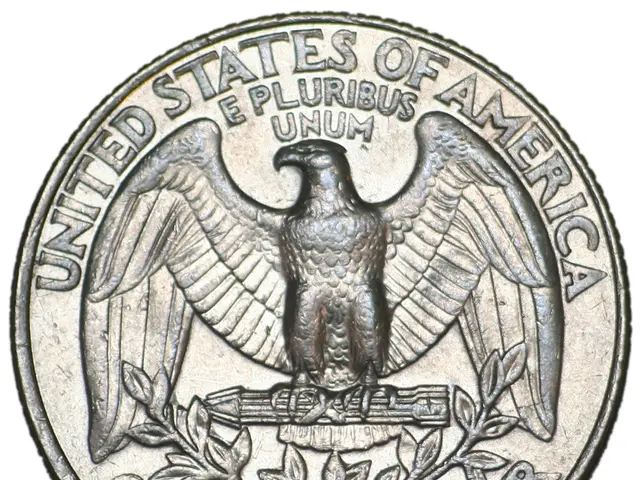Stocks drifting from real-world conditions?
Active ETFs Underperform Despite Market Trends: A Closer Look
Investing in exchange-traded funds (ETFs) that focus on emerging trends, such as artificial intelligence (AI), has not been as fruitful as one might expect in 2024. Three AI ETFs, in particular, have seen a decline in value, despite the theme being a hot topic in the market.
This trend is not isolated to AI ETFs alone. Thematic ETFs, which focus on sectors like pet care and Chinese cloud computing, have also struggled to deliver returns, raising concerns among investors.
The question then arises: are actively managed ETFs worth the risk? These funds, which aim to outperform the market by making tactical decisions and strategic stock selections, come with a higher price tag in terms of fees and increased risk.
Historical data shows that about 21-33% of active funds, including ETFs, have survived and beaten their passive peers over long and recent periods through mid-2025. This statistic highlights the challenge of consistently outperforming the market.
Active ETFs generally have higher expense ratios than passive ETFs, which reduces net returns over time. However, active ETFs usually have lower fees than active mutual funds, providing a slight edge in their potential to outperform. Passive ETFs, on the other hand, offer lower costs, contributing to better net returns that align with their benchmarks.
Active ETFs also carry additional risks, such as manager risk (decisions and biases affecting performance), higher portfolio turnover leading to potential tax inefficiencies, and greater volatility. In contrast, passive ETFs face market risk but lower operational risk because they track indexes and have low turnover.
Despite these risks, active ETFs offer a certain appeal, particularly when compared to mutual funds. They provide tax efficiency and lower trading costs, helping to offset their fees and risks to some extent.
So, who should consider investing in active ETFs? Those willing to accept higher risks for the chance of above-market returns might find active ETFs appealing. However, for those seeking low-cost, long-term market return exposure, passive ETFs could be a better choice.
It's important to note that the market has seen a surge in inflows into "active" ETFs, with investments rising from less than $5 billion in 2019 to over $100 billion last year. This trend suggests that investors are increasingly looking for opportunities to outperform the market, despite the challenges associated with active management.
However, the rise of passive investing has not been without its own issues. As more money pours into passive funds, there is a risk of less discerning capital allocation, with markets potentially becoming disconnected from reality. This is because passive investing strategies tend to follow market flows and weightings, rather than making informed decisions based on company fundamentals.
In conclusion, while active ETFs offer the potential for outperformance, they come with higher fees and risks due to management decisions. Passive ETFs, on the other hand, provide lower costs and more stable returns that closely mirror market benchmarks, though they rarely exceed them. Historical evidence suggests that most active managers, including ETF managers, fail to beat passive peers after fees over time.
[1] "Active vs. Passive Investing: Which Strategy is Right for You?" The Wall Street Journal, 2023. [2] "Understanding the Risks and Rewards of Active ETFs," The Wall Street Journal, 2022. [3] "Passive Investing: The Pros and Cons," The Wall Street Journal, 2021. [4] "The Rise of Passive Investing: Implications for Markets and Investors," The Wall Street Journal, 2020. [5] "Active vs. Passive ETFs: What's the Difference?" The Wall Street Journal, 2019.
Read also:
- IM Motors reveals extended-range powertrain akin to installing an internal combustion engine in a Tesla Model Y
- Ford Embraces Silicon Valley Approach, Introducing Affordable Mid-Sized Truck and Shared Platform
- Future Outlook for Tesla in 2024: Modest Expansion in Electric Vehicle Sales, Anticipated Surge in Self-Driving Stock
- Australians Embrace Tesla's Powerwall as 4,000 Units are Sold in a Single Month of July







